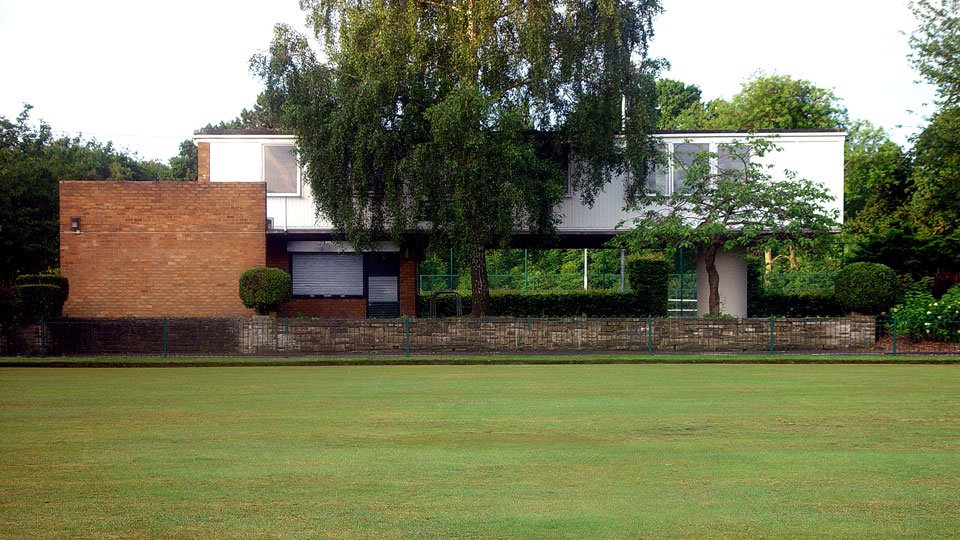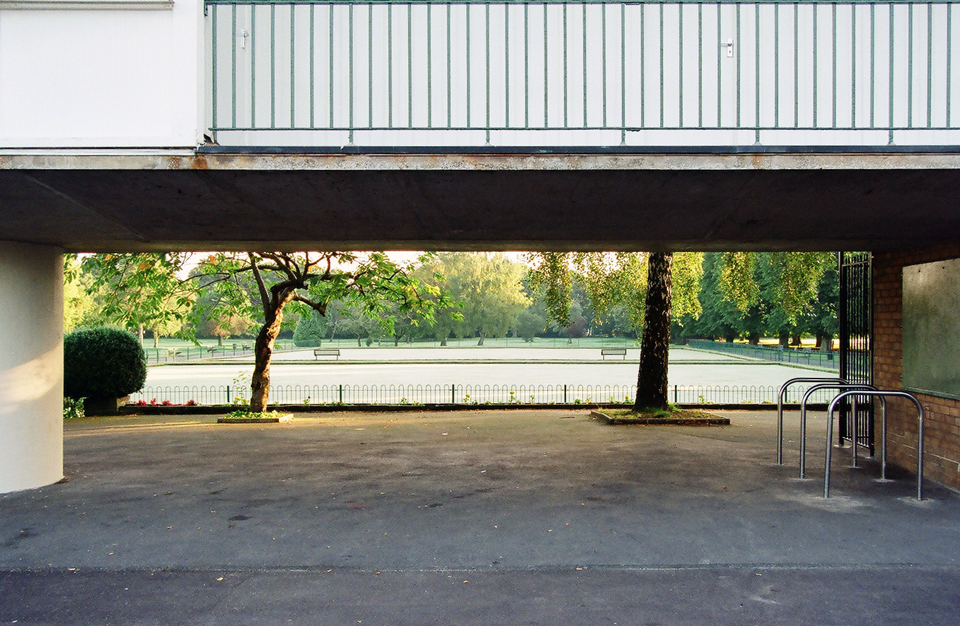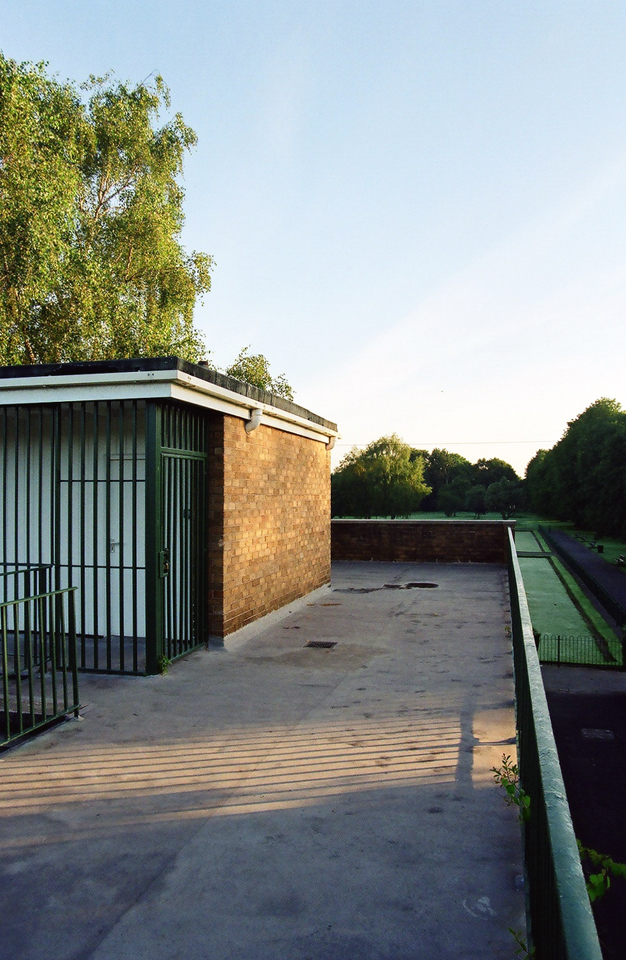Bowls and Tennis Pavilion
1960
A succinct and successful endeavour on the part of the City Architects’ Department. As the 1960s began it is perhaps possible to read the relinquishing of control on the part of Howitt to his younger and advancing design team; certainly this is the scale of project a young architect could cut his teeth upon. It is neither hugely original, or innovative; the highly visible single piloti and planar walls are overt references to Corbusier and Jacobsen. The white painted weatherboard to the upper section recalls boathouses and yacht clubs more than a typology associated with crown green bowling, but somehow the little raised structure fits its site. The building sits between the bowling greens and tennis courts and the extended balconies at first floor form vantage points from which to view the respective matches. The coverall brief included for refreshments to be served from the pavilion too. There is a controlled manner to this scheme that somehow redeems its naive reference to precedent and wilful material application, this is most evident as one considers the framing of the view back toward the bowling green from the rear.


